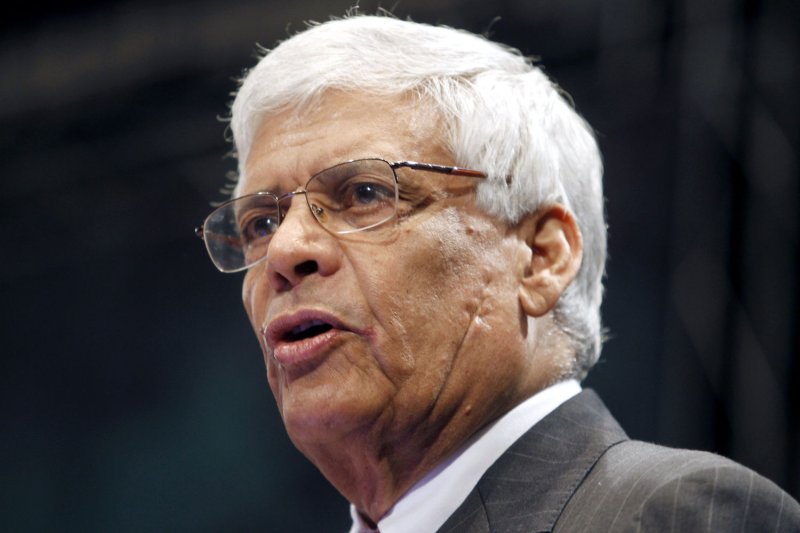Secretary General of OPEC Abdalla Salem El Badri in Tehran, Iran on April 19,2011. UPI/Maryam Rahmanian |
License Photo
WASHINGTON, July 22 (UPI) -- Net oil export earnings of the Organization of Petroleum Exporting Countries will top $1 trillion this year, the Energy Information Administration said citing consolidated figures for the 12 member countries.
EIA, a statistical and analytical agency within the U.S. Department of Energy, said it based its OPEC income projections on its July 2011 short-term energy outlook.
Based on those projections, it said, the 12 OPEC members could earn $1.028 trillion of net oil export revenues in 2011 and $1.108 trillion in 2012.
OPEC members are Algeria, Angola, Ecuador, Iran, Iraq, Kuwait, Libya, Nigeria, Qatar, Saudi Arabia, the United Arab Emirates and Venezuela.
Last year, OPEC earned $778 billion in net oil export revenues, a 35 percent increase from 2009, EIA said.
Saudi Arabia earned the largest share of the earnings, $225 billion, representing 29 percent of total OPEC revenues. On a per-capita basis, OPEC net oil export earnings reached $2,074 in 2010.
EIA says it collects, analyzes and disseminates independent and impartial energy information to promote sound policymaking, efficient markets and public understanding of energy and its interaction with the economy and the environment.
Its frequent reports on OPEC's performance include estimates of the group's net oil export revenues, oil production and consumption.
The overall income figures are based on analysis of the various statistics collected from diverse sources.
"We assume that these exports are sold at prevailing spot prices. For countries that export several different crude varieties, we assume that the proportion of total net oil exports represented by each variety is equal to the proportion of the total domestic production represented by that variety," EIA said.
"In other words, if we assume that Arab Medium represents 20 percent of total oil production in Saudi Arabia, then we assume that Arab Medium represents 20 percent of total net oil exports from Saudi Arabia," EIA said.
The forecasts are independent of approval by any other officer or employee of the U.S. government. EIA said.
At the end of 2009, OPEC had proven oil reserves of 1.06 trillion barrels of crude oil, representing 79.6 percent of the world total of 1.3 trillion barrels, the organization says on its Web site.
Outlook for oil as a source of energy remains strong. Oil prices remain around $100 barrel in response to natural disasters, political upheavals in the Middle East and Africa and uncertain recovery from the 2008-09 downturn. Almost all new demand is sourced by analysts to Asian growth.
Crude oil prices settled less than $99 per barrel Friday morning on the New York Mercantile Exchange after touching a seven-week high Thursday of more than $100 per barrel.
EIA's own outlook said the market will remain tight for the foreseeable future as growing demand from emerging economies for liquid fuels and slowing non-OPEC supply growth maintain upward pressure on oil prices.
The International Energy Agency in Paris forecast oil prices to average $98 per barrel this year and $103 per barrel in 2012.















